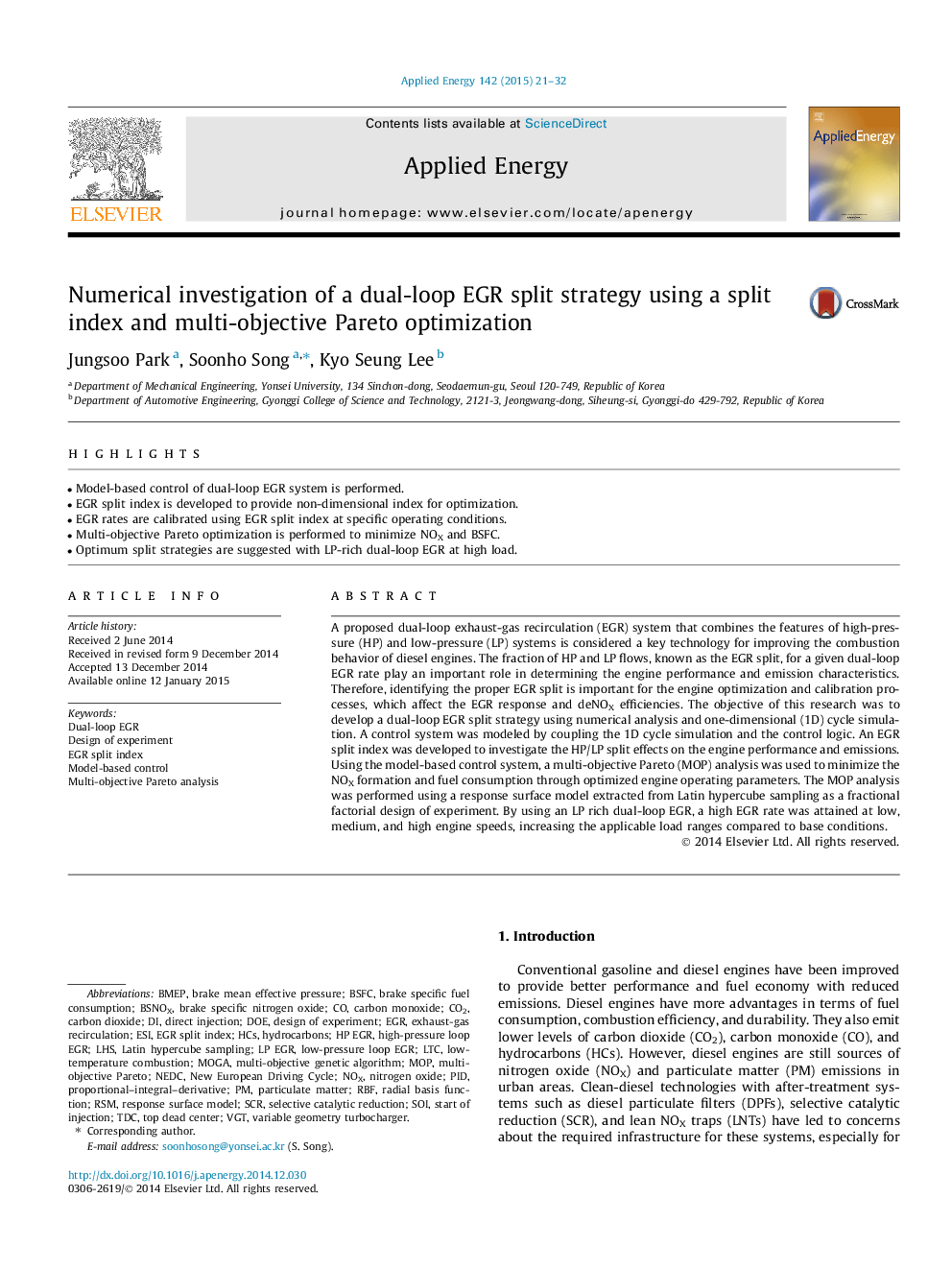| Article ID | Journal | Published Year | Pages | File Type |
|---|---|---|---|---|
| 242570 | Applied Energy | 2015 | 12 Pages |
•Model-based control of dual-loop EGR system is performed.•EGR split index is developed to provide non-dimensional index for optimization.•EGR rates are calibrated using EGR split index at specific operating conditions.•Multi-objective Pareto optimization is performed to minimize NOX and BSFC.•Optimum split strategies are suggested with LP-rich dual-loop EGR at high load.
A proposed dual-loop exhaust-gas recirculation (EGR) system that combines the features of high-pressure (HP) and low-pressure (LP) systems is considered a key technology for improving the combustion behavior of diesel engines. The fraction of HP and LP flows, known as the EGR split, for a given dual-loop EGR rate play an important role in determining the engine performance and emission characteristics. Therefore, identifying the proper EGR split is important for the engine optimization and calibration processes, which affect the EGR response and deNOX efficiencies. The objective of this research was to develop a dual-loop EGR split strategy using numerical analysis and one-dimensional (1D) cycle simulation. A control system was modeled by coupling the 1D cycle simulation and the control logic. An EGR split index was developed to investigate the HP/LP split effects on the engine performance and emissions. Using the model-based control system, a multi-objective Pareto (MOP) analysis was used to minimize the NOX formation and fuel consumption through optimized engine operating parameters. The MOP analysis was performed using a response surface model extracted from Latin hypercube sampling as a fractional factorial design of experiment. By using an LP rich dual-loop EGR, a high EGR rate was attained at low, medium, and high engine speeds, increasing the applicable load ranges compared to base conditions.
